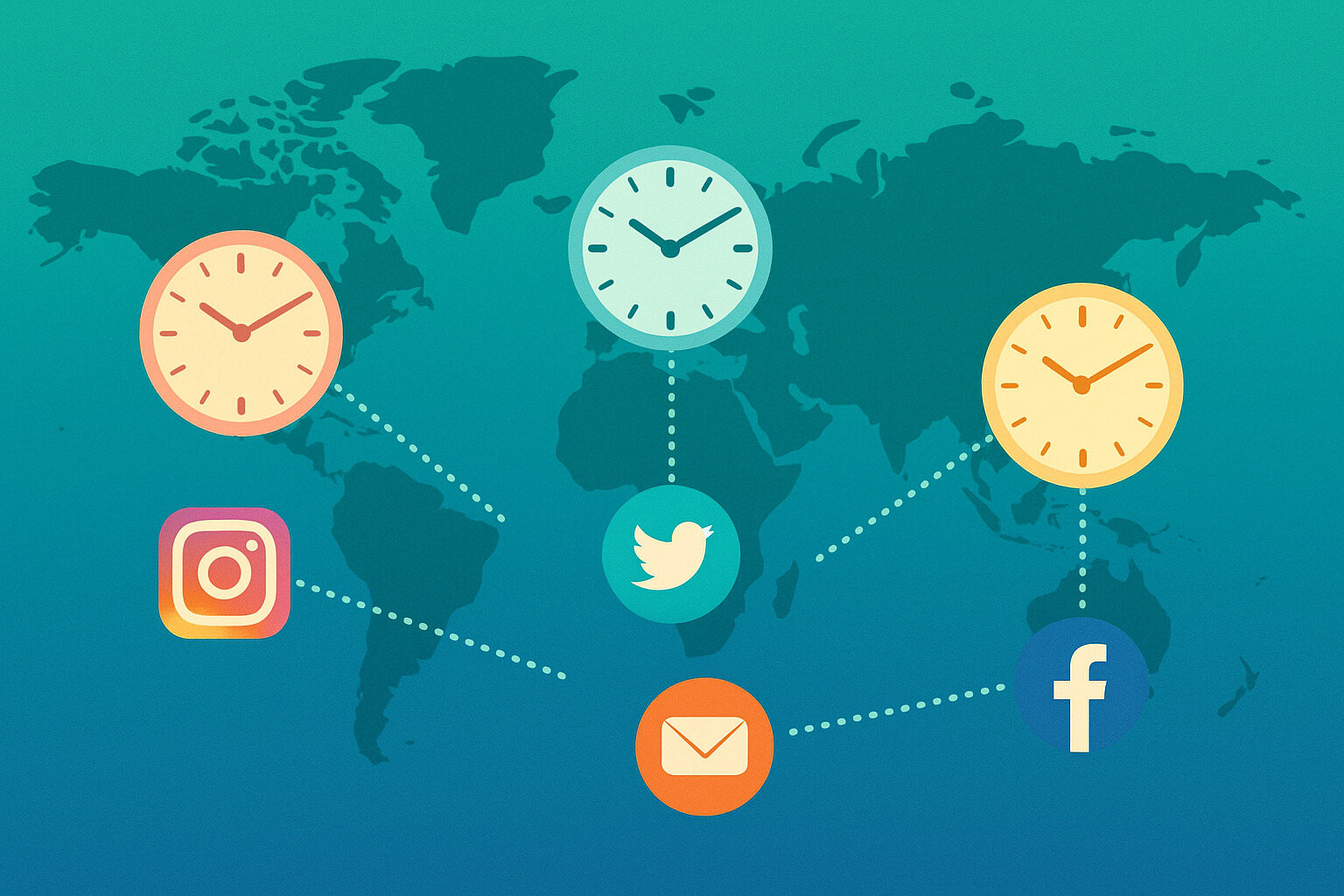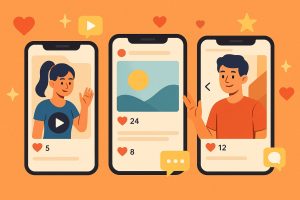Why Timing Matters When Posting on Social Media
A great graphic, a compelling caption, and the right hashtags all have value. But if you post at a time when your audience is asleep, chances are your content will be missed in their feed. That’s why timing is crucial—not just which day, but also which time zone. In the global nature of social media, understanding the best time zone can make or break your engagement.
If your audience spans multiple countries, your posting schedule can significantly impact results. One follower might just be waking up while another is heading to bed. Whether you’re working with the PST zone or another region, time zone isn’t just a technical detail—it’s a foundation for making sure your content appears at the right moment.
Many brands and creators have wondered why their posts perform poorly, even with high-effort content. Analytics often reveal that they were published in the middle of the night for their main audience. A simple shift in time zone can lead to a surge in interactions.
Know Your Audience Location Before Scheduling
It’s not enough to search for the “best time to post.” You first need to know where your audience is actually located. A business page with a U.S. audience won’t perform the same as one targeting Southeast Asia. That’s why analyzing geographic data from platform insights is key.
Facebook and Instagram provide insights into your audience’s location. Once you know where most of your followers are, it’s easier to schedule content aligned with their time zone. If 70% of your audience is in Eastern Time (ET), there’s no need to post according to Asia or Europe time.
One fashion brand based in the UK originally scheduled content in London time. But as their audience grew in the U.S., they noticed delayed engagement. When they switched to posting in ET, likes and shares bounced back.
Why Eastern Time Is Used by Many Global Brands
Eastern Time (ET) in the U.S. is one of the most commonly used time zones for posting. Why? Because the East Coast has a huge market, and its timing aligns with several major business centers in North and South America.
If your goal is to reach a broad part of the Western Hemisphere, scheduling in ET is often a safe choice. Many companies use it as a standard, even with a global audience, because it’s easier to adjust outward than inward.
An Australian content creator used to post travel reels on Sydney time. But most of their followers were U.S.-based. After switching to 8 AM ET, views and comments surged noticeably.
Pacific Time for Brands on the U.S. West Coast
If your audience is focused on the U.S. West Coast—like California, Washington, or Oregon—Pacific Time (PT) is ideal. Online activity here tends to be more relaxed, with lots of late risers, weekend scrollers, and after-work browsing.
Scheduling content around PT works well for entertainment brands, wellness creators, and lifestyle influencers targeting this laid-back market. Posting at 10 AM PT keeps content visible through late evening.
A Los Angeles–based skincare startup once tried posting in ET, but noticed their audience saw the posts too late. Switching back to 10–11 AM PT increased saves and replies—perfectly timed for audience lunch breaks.
GMT and CET for European Engagement
If your target market is in Europe, use Greenwich Mean Time (GMT) or Central European Time (CET). Users in this region are typically active during lunch breaks (12–2 PM) and again at night before bed (7–9 PM).
For brands in fashion, travel, or education serving Europe, timing within GMT/CET is critical. There’s no need to rush content early in the morning—peak social media hours here usually start in the afternoon.
A food content creator in France used to post at 9 AM for “early reach.” But when they switched to 6 PM CET—when people search for dinner ideas—they saw more saves, shares, and site clicks. Timing drove the results.
Southeast Asia: Singapore and Manila Time Zones
In countries like Singapore, Malaysia, and the Philippines, peak engagement windows are different. Users are most active between 11 AM–2 PM and again from 7 PM–9 PM—coinciding with lunch breaks and after work.
Audiences here are mobile-first. They prefer content that’s quick to read, visually appealing, and easily shareable during these scroll-friendly hours. Interactive features like polls or Q&As in Stories also work well at night, especially when timed effectively—even in regions that follow MST time or similar zones.
A tech brand targeting Southeast Asia used to post at 9 AM, but saw low responses. When they switched to 12:30 PM and 8 PM Manila time, interaction levels rose. Posts were more visible and better aligned with the audience’s daily routine.
Middle East Markets: UAE and KSA Standard Times
For brands with a Middle East audience, it’s essential to adjust content to UAE Standard Time or KSA (Saudi Arabia) Standard Time. In these regions, social media peaks in the evening—from 8 PM to midnight.
This late-night culture is driven by climate and lifestyle—most activities happen when it’s cooler. Posting late is especially effective for fashion, tech, and lifestyle content.
A beauty brand in Lebanon targeted UAE users but posted in the morning. When they realized users were more active at night, they switched to posting at 9 PM. Reach and reply rates tripled.
Latin America: Mexico and Brazil Posting Habits
Users in Latin America are most active between 11 AM–2 PM and again from 6 PM–9 PM. Countries like Brazil, Mexico, and Argentina are major markets, so aligning your schedule to local time is key.
Weekday breaks and weekend scrolling are prime times. Entertainment, food, and DIY content perform best in the afternoon. Community or livelihood topics are more effective in the evening.
A digital course creator with a strong Brazilian audience initially posted using New York time. When they switched to 1 PM Brazil Time, link clicks and authentic feedback increased noticeably.
Multi-Time Zone Posting for Global Brands
If your audience is global, it’s difficult to pick just one time zone. In this case, use scheduling tools that allow multiple post times for the same content. This helps you reach different regions at their ideal time.
You can also use content rotation—reposting the same content at different times for different regions. With carefully timed schedules, you stay visible in the feed regardless of user location.
A travel agency tested a three-post loop: 8 AM ET, 2 PM CET, and 7 PM PHT. The same content was shared at staggered times. In 24 hours, they reached three market segments during their respective peak hours. The result? Higher engagement and more inquiries.
Better Engagement with the Right Time and Time Zone
Social media isn’t just about what you post—it’s about when you post. Understanding the right time zone ensures your content is seen, noticed, and recognized by the right audience at the right moment.
Perfect timing isn’t magic—it’s the art of listening to audience behavior and the science of testing data. When you combine both, your content performs with clarity—and delivers real results.











No responses yet